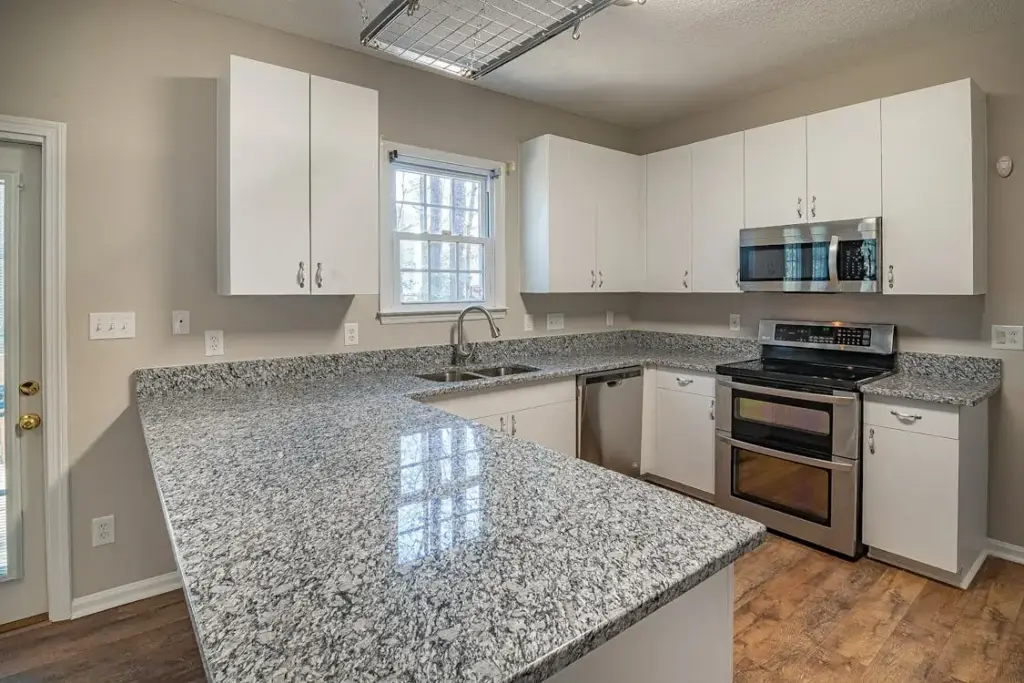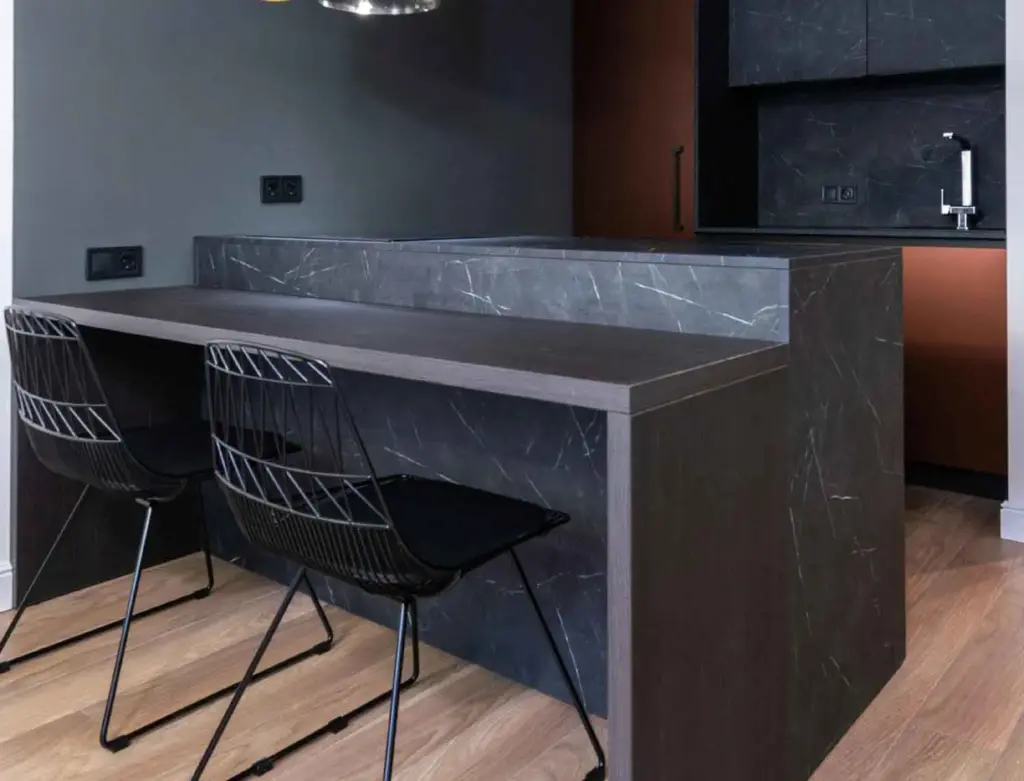Wondering which one is a better kitchen worktop for your home? Here are the main differences between the two and how they are made.
Table of Contents
Quartz Worktops

Created from one of the sturdiest minerals on earth, Quartz worktops are certainly the most long-wearing surface option for every kitchen theme. Aside from its practicality and function, it’s also one of the most eye-catching materials available in the market. It comes in a wide range of hues, including the usual blacks, browns, and creams, as well as reds and greens. Some slabs also have veining for the look of marble or granite.
How is Quartz Worktop made?
Unlike the natural stone slabs (which are mined), Quartz slabs are factory-engineered to ensure high quality and durability. Its primary element is ground quartz (around 94%), fused with pigments to provide a richness of colours and polyester resins to completely bind everything. For some designs, metallic flecks or recycled glass are incorporated into the mix to further elevate the texture of the slab.
The resins also help make each slab non-porous, as well as scratch and stain-resistant so they never need to be sealed. In comparison granite, which commonly needs to be re-sealed with a new protective top coat every once in a while, to keep it from absorbing moisture and/or other substances not seen with the naked eye
In the past, the biggest factor which made homeowners doubtful of Quartz worktops was that they lacked the wide variations of colours and patterns that you usually get with natural stone. Nowadays, all the industries that offer multi-coloured slabs with enough swirls, flecks, and sleek patterns make them almost identical to the real thing.
These worktops were once available only with a polished finish; but now, you can get one with a sandblasted, honed, or even with an embossed look! If it’s the vibe of textured slate, matte limestone, or glossy granite that you want, there’s a perfect Quartz worktop waiting for you.
Not only that, homeowners won’t have to break the bank upon purchasing this surface material for it is available at a much more affordable price– making it budget-friendly, high-quality quartz worktops.
This is the ultimate worktop surface that provides you with everything you need; starting from cooking and cleaning needs, up to the style and design that would work with your kitchen theme.
Silestone Worktops

Determining the best worktop option for your kitchen and bathroom is tough, especially with kitchens. Picking out the right worktop material with all the available surfaces on the market, such as granite and marble is a challenge, but when it comes to examining features like scratches and staining; Silestone fares well. Silestone worktops are made from quartz, which supplies a wide variety of colour tones, finishes, and styles for various bathroom and kitchen worktops, as well as complementing a lot of home decorations and themes.
What exactly is Silestone
Silestone worktops are manufactured materials used to make worktops, floors, sinks, wall cladding, and shower trays both for kitchen and bathroom remodelling. It’s also quite well-known for its non-porous structure and extreme durability.
The material is hard and less resistant to stains, scratches, and even viruses and bacteria than other worktop surfaces. Because it’s easy to maintain and also customizable homeowners can achieve a high-quality look minus the high maintenance.
How is it made
Silestone is made up of natural quartz crystals, with a portion of raw ingredients being colour agents, polyester resin, and antimicrobial protection, among other essential components. The polyester resin is what holds and binds the quartz crystals altogether, thus, creating top quality Silestone surface.
Silestone may greatly resemble marble and granite, but it shines a bit brighter than those two because the quartz crystals allow it to sparkle more than the naturally occurring materials. From start to finish, the whole look is highly engineered and each manufacturer has their style, colour palette, finish, and size options to cater to their clients’ needs.
Incorporating Silestone in your home
Just like what people usually say, the kitchen is the heart of the home; especially when it comes to modern open-plan spaces where the kitchen connects to the family room.
The genuine combination of function and style means a kitchen must be functional to assist with food preparation, cooking, and dining and stylish to meet the homeowner’s unique take on their individualized home space. To achieve this perfect blend, colour, size, and style preferences must first be determined.




